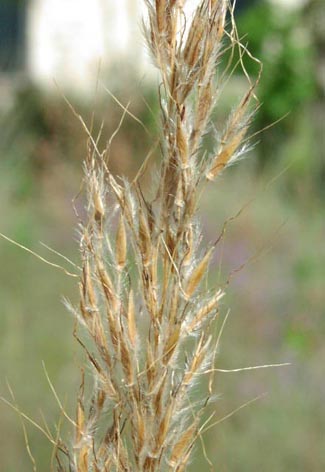Indiangrass

Common Name(s):
Indiangrass
Scientific Name:
Sorghastrum nutans (L.) Nash.
Andropogon nutans L.
Sorghastrum avenaceum (Mischx.) Nash
Scientific Name Synonyms:
SONU2
Symbol:
symbol goes here
Description:
Life Span: Perennial
Origin: Native
Season: Warm
Growth Characteristics: Indiangrass is a perennial grass with short, strong rhizomes and erect, tufted stems from 2½-5’ tall. It starts growth in late spring or early summer and flowers in mid- to late summer.
Seedhead: The seedhead is a single, narrow, plume-like panicle that is golden brown and 4-12” long. Spikelets have firm to hardened glumes that are often dark in color and hairy at the base. Florets have awns from ½-1” long that are twisted and bent. Seeds are light and fluffy with attached awns.
Leaves: Leaf blades are long, flat, 1/4 to 3/8" wide, and narrow at the point of attachment to the sheath. It has a distinguishingly characteristic “rifle sight-shaped” ligule.
Ecological Adaptions:
Indiangrass is found in hanging gardens and along washes at 3,700-7,200’ in Southern Utah where annual precipitation is 10 inches or less, but flooding with runoff water is common.
Soils: It grows best in deep, well-drained floodplain soils but is tolerant of poorly to excessively drained soils, acid to alkaline conditions, and soil textures ranging from sandy to clayey.
Associated Species: Includes sedges, rushes, common reed, willows, cottonwood, and other riparian species.
Uses and Management:
Indiangrass is generally considered a grass of the Tall Grass Prairie. It occurs in Southern Utah in low elevation riparian communities in good condition. It is nutritious and preferred by wild and domestic grazing animals and is not tolerant of heavy, season-long grazing. It is an effective soil stabilizing plant.

